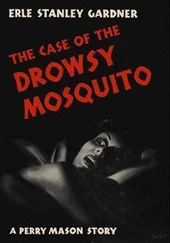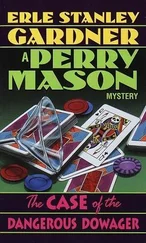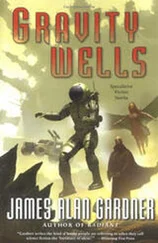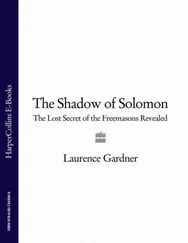Daniel Gardner - The Science of Fear
Здесь есть возможность читать онлайн «Daniel Gardner - The Science of Fear» весь текст электронной книги совершенно бесплатно (целиком полную версию без сокращений). В некоторых случаях можно слушать аудио, скачать через торрент в формате fb2 и присутствует краткое содержание. ISBN: , Издательство: Penguin Group (USA) Incorporated, Жанр: Психология, Политика, Прочая научная литература, на английском языке. Описание произведения, (предисловие) а так же отзывы посетителей доступны на портале библиотеки ЛибКат.
- Название:The Science of Fear
- Автор:
- Издательство:Penguin Group (USA) Incorporated
- Жанр:
- Год:неизвестен
- ISBN:9780525950622
- Рейтинг книги:3 / 5. Голосов: 1
-
Избранное:Добавить в избранное
- Отзывы:
-
Ваша оценка:
- 60
- 1
- 2
- 3
- 4
- 5
The Science of Fear: краткое содержание, описание и аннотация
Предлагаем к чтению аннотацию, описание, краткое содержание или предисловие (зависит от того, что написал сам автор книги «The Science of Fear»). Если вы не нашли необходимую информацию о книге — напишите в комментариях, мы постараемся отыскать её.
The Science of Fear — читать онлайн бесплатно полную книгу (весь текст) целиком
Ниже представлен текст книги, разбитый по страницам. Система сохранения места последней прочитанной страницы, позволяет с удобством читать онлайн бесплатно книгу «The Science of Fear», без необходимости каждый раз заново искать на чём Вы остановились. Поставьте закладку, и сможете в любой момент перейти на страницу, на которой закончили чтение.
Интервал:
Закладка:
Everyone knows that deadly rocks can fall from the sky, but outside space camps and science-fiction conventions, the threat of death-by-asteroid is used only as a rhetorical device for dismissing some worry as real but too tiny to worry about. I may have used it myself once or twice. I probably won’t again, though, because in late 2004 I attended a conference that brought together some of the world’s leading astronomers and geoscientists to discuss asteroid impacts.
The venue was Tenerife, one of Spain’s Canary Islands that lie off the Atlantic coast of North Africa. Intentionally or not, it was an ideal setting. The conference was not simply about rocks in space, after all. It was about understanding a very unlikely, potentially catastrophic risk. And the Canary Islands are home to two other very unlikely, potentially catastrophic risks.
First, there are the active volcanoes. All the islands were created by volcanic activity, and Tenerife is dominated by a colossus called Teide, the third-largest volcano in the world. Teide is still quite active, having erupted three times in the last 300 years.
And there is the rift on La Palma mentioned in the last chapter. One team of scientists believes it will drop a big chunk of the island into the Atlantic and several hours later people on the east coast of North and South America will become extras in the greatest disaster movie of all time. Other scientists dispute this, saying a much smaller chunk of La Palma is set to go, that it will crumble as it drops, and that the resulting waves won’t even qualify as good home video. They do agree that a landslide is possible, however, and that it is likely to happen soon in geological terms—which means it could be 10,000 years from now, or tomorrow morning.
Now, one might think the residents of the Canary Islands would find it somewhat unsettling that they could wake to a cataclysm on any given morning. But one would be wrong. Teide’s flanks are covered by large, pleasant towns filled with happy people who sleep quite soundly. There are similarly no reports of mass panic among the 85,000 residents of La Palma. The fact that the Canary Islands are balmy and beautiful probably has something to do with the residents’ equanimity in the face of Armageddon. There are worse places to die. The Example Rule is also in play. The last time Teide erupted was in 1909, and no one has ever seen a big chunk of inhabited island disappear. Survivors would not be so sanguine the day after either event.
But that can’t be all there is to it. Terrorists have never detonated a nuclear weapon in a major city, but the mere thought of that happening chills most people, and governments around the world are working very hard to see that what has never happened never does. Risk analysts call these low-probability /high-consequence events. Why would people fear some but not others? Asteroid impacts—classic low-probability/high-consequence events—are an almost ideal way to investigate that question.
The earth is under constant bombardment by cosmic debris. Most of what hits us is no bigger than a fleck of dust, but because those flecks enter the earth’s atmosphere at speeds of up to 43 miles per second, they pack a punch all out of proportion to their mass. Even the smallest fleck disappears in the brilliant flash of light that we quite misleadingly call a shooting star.
The risk to humans from these cosmic firecrackers is zero. But the debris pelting the planet comes in a sliding scale of sizes. There are bits no bigger than grains of rice, pebbles, throwing stones. They all enter the atmosphere at dazzling speed, and so each modest increase in size means a huge jump in the energy released when they burn.
A rock one-third of a meter across explodes with the force of two tons of dynamite when it hits the atmosphere. About a thousand detonations of this size happen each year. A rock one meter across—a size commonly used in landscaping—erupts with the force of 100 tons of dynamite. That happens about forty times each year.
At three meters across, a rock hits with the force of 2,000 tons of dynamite. That’s two-thirds of the force that annihilated the city of Halifax in 1917, when a munitions-laden ship exploded in the harbor. Cosmic wallops of that force hit the earth roughly twice a year.
And so it goes up the scale, until, at thirty meters across, a rock gets a name change. It is now called an asteroid, and an asteroid of that size detonates in the atmosphere like two million tons of dynamite—enough to flatten everything on the ground within 6 miles. At 100 meters, asteroids pack the equivalent of 80 million tons of dynamite. We have historical experience with this kind of detonation. On June 30, 1908, an asteroid estimated to be 60 meters wide exploded five miles above Tunguska, a remote region in Siberia, smashing flat some 1,200 square miles of forest.
Bigger asteroids get really scary. At a little more than a half mile across, an asteroid could dig a crater 9 miles wide, spark a fireball that appears twenty-five times larger than the sun, shake the surrounding region with a 7.8 earthquake, and possibly hurl enough dust into the atmosphere to create a “nuclear winter.” Civilization may or may not survive such a collision, but at least the species would. Not so the next weight class. A chunk of rock 6 miles across would add humans and most other terrestrial creatures to the list of species that once existed. This is what did in the dinosaurs.
Fortunately, there aren’t many giant rocks whizzing around space. In a paper prepared for the Organization for Economic Cooperation and Development, astronomer Clark Chapman estimated that the chance of humanity being surprised by a doomsday rock in the next century is one in a million. But the smaller the rock, the more common it is—which means the smaller the rock, the greater the chance of being hit by one. The probability of the earth being walloped by a 300-meter asteroid in any given year is 1 in 50,000, which makes the odds 1 in 500 over the course of the century. If a rock like that landed in the ocean, it could generate a mammoth tsunami. On land, it would devastate a region the size of a small country. For a 100-meter rock, the odds are 1 in 10,000 in one year and 1 in 100 over the next 100 years. At 30 meters, the odds are 1 in 250 per year and 1 in 2.5 over the next 100 years.
Figuring out a rational response to such low-probability/high-consequence risks is not easy. We generally ignore one-in-a-million dangers because they’re just too small and life’s too short. Even risks of 1 in 10,000 or 1 in 1,000 are routinely dismissed. So looking at the probability of an asteroid strike, the danger is very low. But it’s not zero. And what if it actually happens? It’s not one person who’s going to die, or even one thousand or ten thousand. It could be millions, even billions. At what point does the scale of the loss make it worth our while to deal with a threat that almost certainly won’t come to pass in our lifetime or that of our children or their children?
Reason has a typically coldhearted answer: It depends on the cost. If it costs little to protect against a low-probability/high-consequence event, it’s worth paying up. But if it costs a lot, we may be better off putting the money into other priorities—reducing other risks, for example—and taking our chances.
For the most part, this is how governments deal with low-probability/ high-consequence hazards. The probability of the event, its consequences, and the cost are all put on the table and considered together. That still leaves lots of room for arguments. Experts endlessly debate how the three factors should be weighted and how the calculation should be carried out. But no one disputes that all three factors have to be considered if we want to deal with these dangers rationally.
Читать дальшеИнтервал:
Закладка:
Похожие книги на «The Science of Fear»
Представляем Вашему вниманию похожие книги на «The Science of Fear» списком для выбора. Мы отобрали схожую по названию и смыслу литературу в надежде предоставить читателям больше вариантов отыскать новые, интересные, ещё непрочитанные произведения.
Обсуждение, отзывы о книге «The Science of Fear» и просто собственные мнения читателей. Оставьте ваши комментарии, напишите, что Вы думаете о произведении, его смысле или главных героях. Укажите что конкретно понравилось, а что нет, и почему Вы так считаете.












